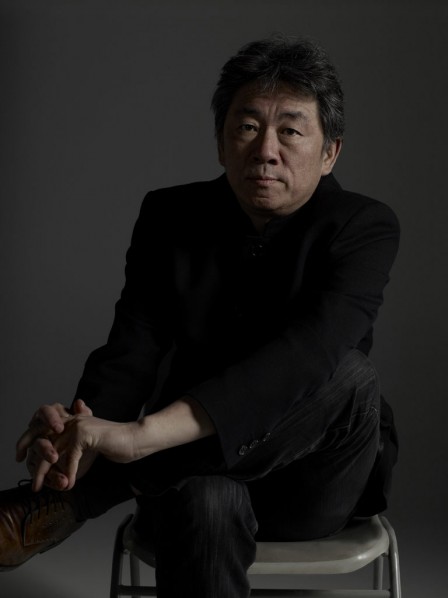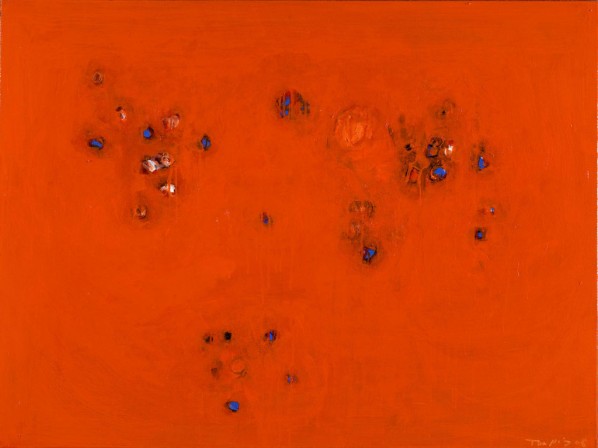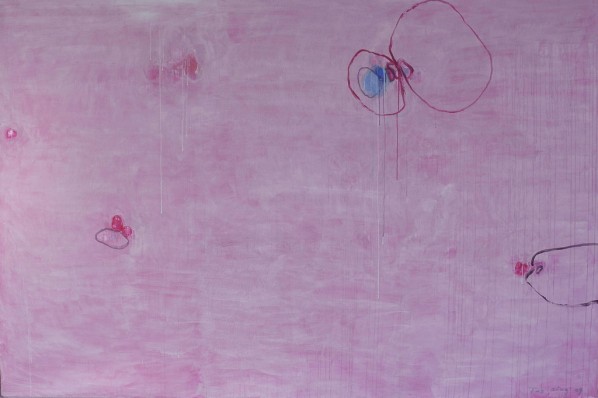By Fan Di'an
Among current contemporary Chinese Artists, Tan Ping is a very special person. Special here means he is a distinguished artist with a many layered intellectual background, or you could say a versatile artist. His art experience lies in print-making in the most important art school of China—CAFA, where he acquired a strong ability in modeling, and then he went onto study in Germany, at the Berlin University of Arts, where the freedom of modeling is emphasized, and students can choose any material as a medium to create their art. When he returned to China, he undertook a new role as he established the Design Department of CAFA, and then the School of Design. He devoted most of his time and energy to the basic teaching of design and the teaching of visual communication, while, at the same time, he continued creating prints, he also created lots of sketches and a number of oil paintings that express his feelings. He works between painting and design, which gives him the ability to establish his personal art expression into public spaces. In the Chinese contemporary art arena, it is very difficult to find an artist like him who moves freely within the various art techniques, as well as using the skill, exploration and creation within each medium. It’s also his way of cross-major and cross-media thinking, researching, as well as forming creations that determine the general appearance of Tan Ping's paintings. When we place the characteristics of his painting into the history of Chinese contemporary art, then the important features of Chinese contemporary art are much more obviously set within the cultural interaction of the era.

Tan Ping
From Tan Ping’s collection, we can see that most of his art is abstract. In China experimentation in abstract art started after the reform and opening-up in 1980. Abstract art was already a popular art form in western countries. Compared with realistic painting which develops from traditional art, abstract art opens up possibilities for artists to express themselves, and also presents the art language in the form of self-sufficiency and self-discipline. Although every abstract artist has his own style, they all find a direct connection between the languages of art and the spiritual expression of themselves. For Chinese artists, abstract art is an historical experience, and it is a very difficult question of how to find its’ new meaning in the context of the development of China and its cultural background. Chinese artists have to find the original point of abstract paintings, only then, can it be seen as just the succession of tradition and history of the West. When choosing abstract art to express himself, Tan Ping has a clear view of his cultural position. He doesn’t like to be the successor of western abstract art, but to create abstract art according to the time and Chinese characteristics. In some way, his paintings can be called “post- abstract art”.
When observing an abstract painting, we need to initially find the motivation of the artist. In Tan Ping’s works, there are circle-shaped conglomerations spreading across the canvas. Because the space of his work is constructed with color conglomerations, these circle-shaped conglomerations are like floaters in the air with an order of their own, but with a much more free state of spreading, of extending, and sometimes even leaving their trace of growing and moving on the canvas. Obviously, these conglomerations are from Tan Ping’s personal experience, from which he realizes the feeling towards cells that he saw in the hospital. Taking the state of cells as the motivation of his creation, he focuses his works on the state of “spreading” and “extending”, and it is also the theme image for his paintings. During the process of painting, he follows his feeling of “spreading” and “extending”, just like writing unconsciously, converting these emotions into structures and images. The flat background of his paintings are usually constructed by pure and powerful colors, but at the same time between the theme images and the background, in contrast to this, he uses exquisite strokes to make color transitions, making the images stick together with the background rather than being isolated, as if there is space to breath and grow in between.
Starting from very specific objects and then expressing them in an abstract way is a very important feature of Tan Ping’s art. It also reminds us that although abstract painting is a traditional language of art form, but under new cultural conditions, artists can also create new abstract art forms according to social realities and one’s personal experience. “Spreading” and “extending” are not only rules of cell growth, but also the general rules of the whole world. From this point, Tan Ping’s abstract paintings have a connotation of sociology. He starts from a concern for the practical world, with his feeling for real life and the real world as a chance to express himself, however he only uses abstract language or images as a medium. We can read a real state of life and common experience from his paintings, and also from this point, his abstract paintings are not a simple extension of the style of the West, or a response to western abstract art at a normal level, but a spiritual and emotional image based on the soil of real life in China, especially the real state of the cultural situation.
Tan Ping tries to use different mediums to express his feelings, and what is important is that he keeps thinking about philosophy, history and reality while creating art works, in order to increase his thoughts. The aim of art is to express one’s feeling freely, and in Tan Ping’s art, there is such a freedom of expression, like a trace left by a roaming spirit. As an artist, Tan Ping has a many faceted intelligence, for instant, he is able to design education and design teaching materials, he is good at enlightening students with socio-cultural realities, and searches design propositions to separate them from reality. Sometimes, he even asks the students to conduct interviews and social investigations, to make design propositions spread into the real social environment, giving it a social property, and lets student not only treat design as a functional task but also as sociological thinking. His thought is always on a sociological level, thinking about the cultural problems in the society, which injects a much wider cultural value into art. His abstract art is based on the experience of art history, while at the same time having a close relationship with contemporary art, which made his art an important creation that reflects today’s Chinese art culture.

2008BX—030 by Tan Ping

2008BX—051 by Tan Ping?

2008BX—065 by Tan Ping

Life-03 by Tan Ping




























